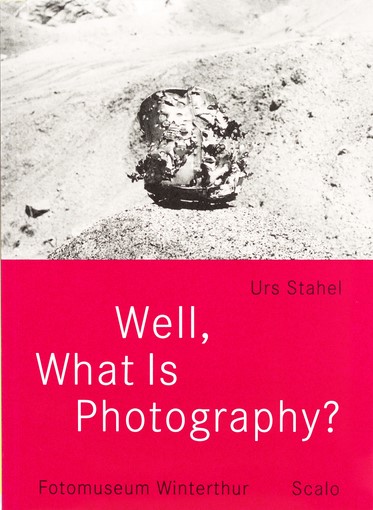Introduction: “Singular Images: Essays on Remarkable Photographs,” edited by Sophie Howarth, is a collection of essays that delves into the profound impact of specific photographs. Each essay in the book is written by a different author, offering diverse perspectives on what makes certain photographs stand out as exceptional. The collection explores the technical, historical, and emotional aspects of these images, providing a rich analysis of photography as an art form and cultural document.
1. The Power of Singular Images
Defining Singular Images:
- The concept of a “singular image” is central to the book. These are photographs that capture a moment in a way that resonates deeply, either due to their aesthetic qualities, the context of their creation, or the emotions they evoke.
- The essays investigate why certain images remain iconic and continue to influence viewers and the photographic community.
Impact on Viewers:
- The emotional and psychological impact of these photographs on viewers is a recurring theme. The authors discuss how singular images can evoke strong reactions and linger in the memory, shaping perceptions and narratives.
- The power of photography to communicate complex emotions and stories through a single frame is highlighted, emphasizing its unique place among visual arts.
2. Technical Excellence and Innovation
Photographic Techniques:
- Several essays focus on the technical aspects that contribute to the singularity of these images. This includes discussions on composition, lighting, timing, and the use of color or black-and-white.
- Innovations in photographic techniques and how they enhance the visual and emotional impact of the photographs are examined. The mastery of these techniques often distinguishes remarkable photographs from ordinary ones.
Experimentation and Creativity:
- The book celebrates the creative risks taken by photographers to capture unique images. This includes experimenting with new methods, breaking conventional rules, and pushing the boundaries of what is possible with a camera.
- The role of serendipity and the photographer’s intuition in creating remarkable images is also acknowledged.
3. Historical and Cultural Context
Contextual Significance:
- Each essay places the featured photograph within its historical and cultural context, explaining how these factors contribute to its significance.
- The photographs often serve as visual records of specific moments in time, providing insight into historical events, cultural shifts, and societal issues.
Influence on Society:
- The book explores how singular images have influenced public opinion, cultural trends, and even political movements. The ability of a photograph to capture and convey the essence of a significant event or issue makes it a powerful tool for communication and change.
- Examples include iconic images from wars, social movements, and pivotal moments in history that have shaped collective memory and consciousness.
4. Personal and Artistic Expression
Photographers’ Intentions:
- The essays delve into the intentions and perspectives of the photographers behind these remarkable images. Understanding the artist’s vision and motivation provides deeper insight into the photograph’s meaning and impact.
- The personal stories and experiences of the photographers often add a layer of depth to the interpretation of the images.
Artistic Vision:
- The book highlights the importance of the photographer’s artistic vision in creating singular images. This includes their choice of subject matter, the way they frame and compose their shots, and the narrative they aim to construct through their work.
- The tension between documentary realism and artistic interpretation is a common theme, showcasing the dual role of photography as both a factual record and a creative expression.
5. The Role of Interpretation
Viewer Interpretation:
- The essays discuss how viewer interpretation plays a crucial role in the life of a photograph. Each viewer brings their own experiences, emotions, and perspectives, which influence how they perceive and connect with the image.
- The dynamic interaction between the photograph and its audience is emphasized, showing how meaning can evolve over time and across different cultural contexts.
Multiplicity of Meanings:
- The potential for multiple interpretations of a single image is explored, highlighting the richness and complexity of photography. This multiplicity is part of what makes certain photographs endlessly fascinating and significant.
- The book encourages readers to look beyond the surface and consider the deeper layers of meaning and context that a photograph can convey.
6. Case Studies of Remarkable Photographs
Detailed Analyses:
- Each essay provides a detailed analysis of a specific photograph, breaking down the elements that contribute to its singularity. This includes visual analysis, contextual background, and the photographer’s creative process.
- The selection of photographs spans different genres, styles, and periods, showcasing the diversity and versatility of photography.
Iconic Examples:
- Some of the featured photographs are widely recognized icons, while others are lesser-known gems. This mix provides a comprehensive look at what constitutes a remarkable photograph across various contexts and audiences.
- Examples include war photography, street photography, portraiture, and conceptual art, each offering unique insights into the power of singular images.
Conclusion
“Singular Images: Essays on Remarkable Photographs” edited by Sophie Howarth is a compelling collection that delves into the essence of what makes certain photographs stand out. Through a series of insightful essays, the book explores the technical mastery, historical context, emotional impact, and artistic vision behind remarkable images. It highlights the power of photography to capture moments, evoke emotions, and influence society. The collection serves as both a tribute to the art of photography and a critical analysis of its role in contemporary visual culture.
Additional Resources:
For more in-depth reviews and insights, you may refer to the following links:


